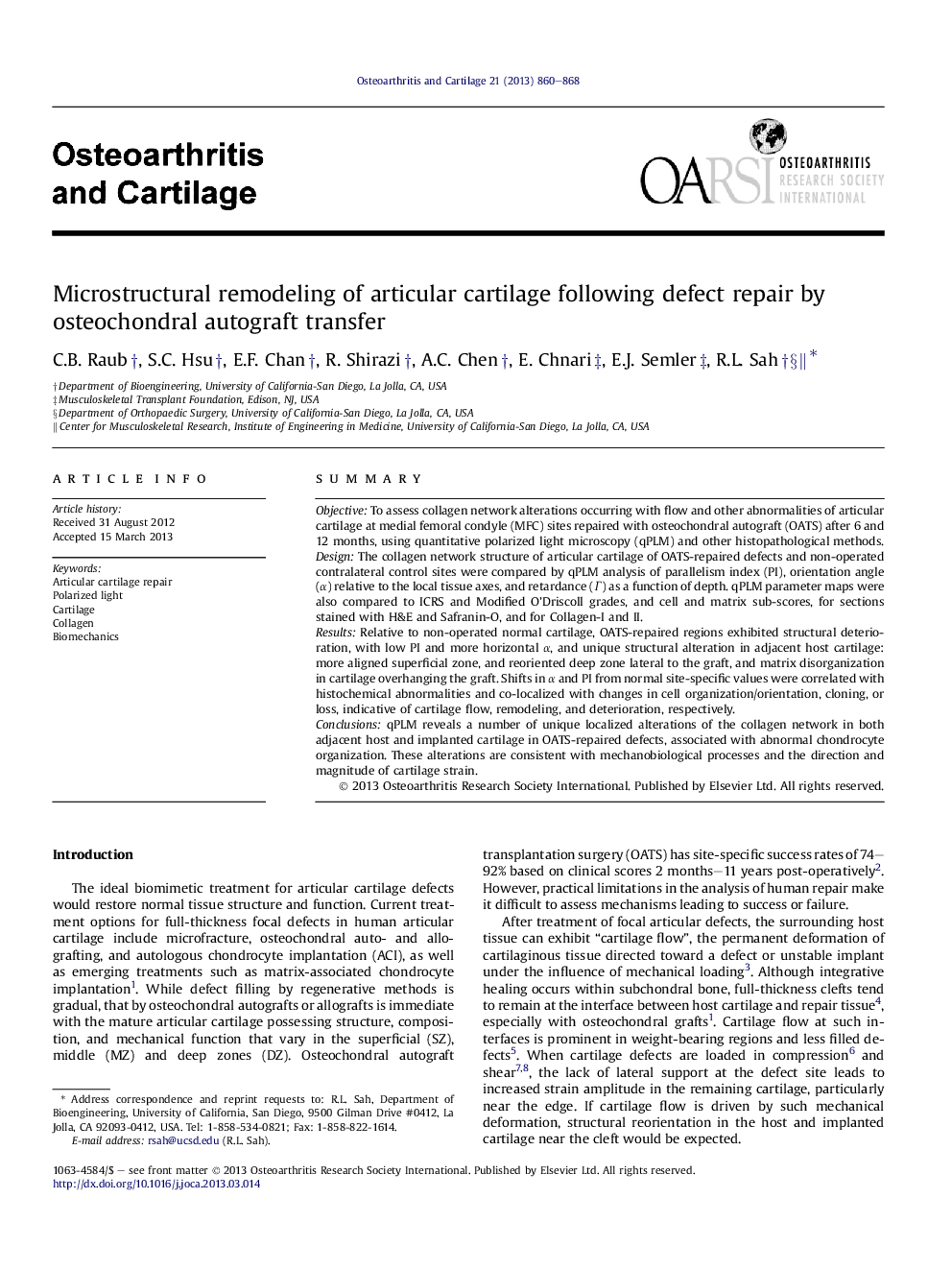| Article ID | Journal | Published Year | Pages | File Type |
|---|---|---|---|---|
| 3379601 | Osteoarthritis and Cartilage | 2013 | 9 Pages |
SummaryObjectiveTo assess collagen network alterations occurring with flow and other abnormalities of articular cartilage at medial femoral condyle (MFC) sites repaired with osteochondral autograft (OATS) after 6 and 12 months, using quantitative polarized light microscopy (qPLM) and other histopathological methods.DesignThe collagen network structure of articular cartilage of OATS-repaired defects and non-operated contralateral control sites were compared by qPLM analysis of parallelism index (PI), orientation angle (α) relative to the local tissue axes, and retardance (Γ) as a function of depth. qPLM parameter maps were also compared to ICRS and Modified O'Driscoll grades, and cell and matrix sub-scores, for sections stained with H&E and Safranin-O, and for Collagen-I and II.ResultsRelative to non-operated normal cartilage, OATS-repaired regions exhibited structural deterioration, with low PI and more horizontal α, and unique structural alteration in adjacent host cartilage: more aligned superficial zone, and reoriented deep zone lateral to the graft, and matrix disorganization in cartilage overhanging the graft. Shifts in α and PI from normal site-specific values were correlated with histochemical abnormalities and co-localized with changes in cell organization/orientation, cloning, or loss, indicative of cartilage flow, remodeling, and deterioration, respectively.ConclusionsqPLM reveals a number of unique localized alterations of the collagen network in both adjacent host and implanted cartilage in OATS-repaired defects, associated with abnormal chondrocyte organization. These alterations are consistent with mechanobiological processes and the direction and magnitude of cartilage strain.
